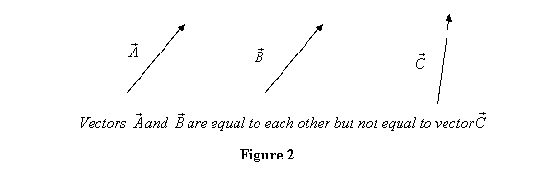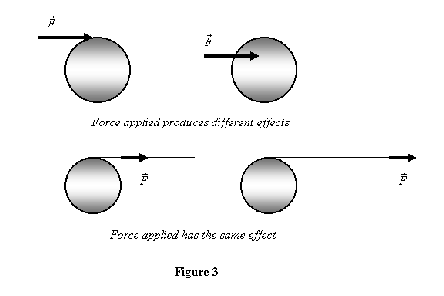Introduction and Equality of Vectors
You have learnt in the past is that vectors are quantity which have both a magnitude and a direction in contrast to scalar quantities that are specified by their magnitude only. Thus a quantity like force is a vector quantity because when I tell someone that I am applying X- amount of force, by itself it is not meaningful unless I also specify in which direction I am applying this force. Similarly when I ask you where your friend’s house is you can’t just tell me that it is some 500 meters far. You will also have to tell me that it is 500 meters to the north or 300 meters to the east and four hundred meters to the north from here. Without formally realizing it, you are telling me a about a vector quantity. Thus quantities like displacement, velocity, acceleration, force are vectors. On the other hand the quantities distance, speed and energy are scalar quantities. In the following we discuss the algebra involving vector quantities. We begin with a discussion of the equality of vectors.
Equality of Vectors: Since a vector is defined by the direction and magnitude, two vectors are equal if they have the same magnitude and direction. Thus in figure 2 vector ![]() is equal to vector B and but not equal to vector
is equal to vector B and but not equal to vector ![]() although all of them have the same magnitude.
although all of them have the same magnitude.
Thus we conclude that any two vectors which have the same magnitude and are parallel to each other are equal. If they are not parallel then they cannot be equal no matter what their magnitude.
In physical situations even two equal vectors may produce different effects depending on where they are located. For example take the force ![]() applied on a disc. If applied on the rim it rotates the wheel at a speed different from when it is applied to a point nearer to the center. Thus although it is the same force, applied at different points it produces different effects. On the other hand, imagine a thin rope wrapped on a wheel and being pulled out horizontally from the top. On the rope no matter where the force is applied, the effect is the same. Similarly we may push the wheel by applying the same force at thee end of a stick with same result (see figure 3).
applied on a disc. If applied on the rim it rotates the wheel at a speed different from when it is applied to a point nearer to the center. Thus although it is the same force, applied at different points it produces different effects. On the other hand, imagine a thin rope wrapped on a wheel and being pulled out horizontally from the top. On the rope no matter where the force is applied, the effect is the same. Similarly we may push the wheel by applying the same force at thee end of a stick with same result (see figure 3).
Thus we observe that a force applied anywhere along its line of applications produces the same effect. This is known as transmissibility of force. On the other hand if the same force is applied at a point away from its line of application, the effect produced is different. Thus the transmissibility does not mean that force can be applied anywhere to produce the same effect but only at any point on its line of application.


One Response to “Engineering Mechanics | Introduction and Equality of Vectors”
Anyewi George
thanks for your effort.